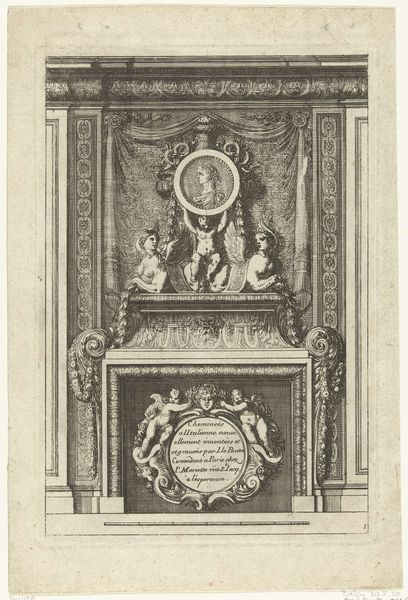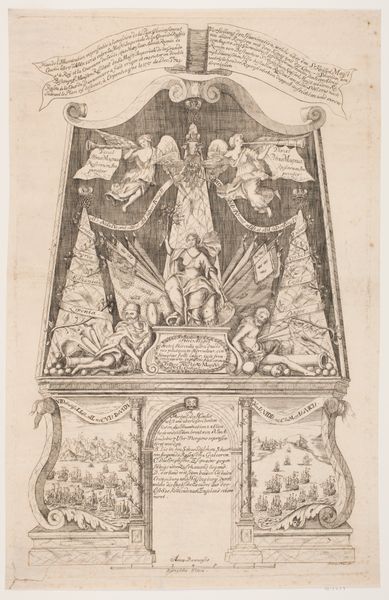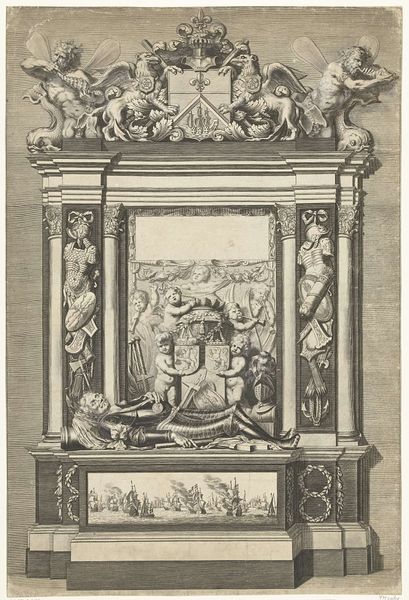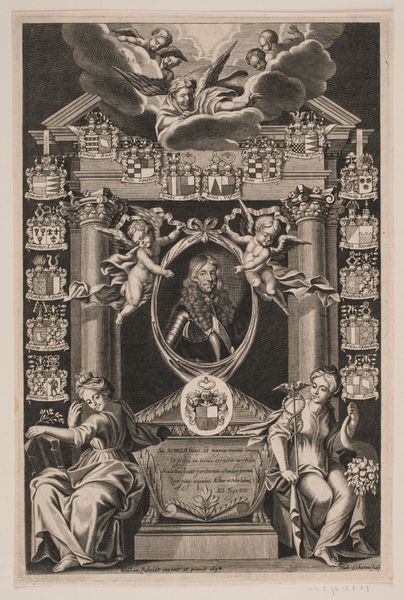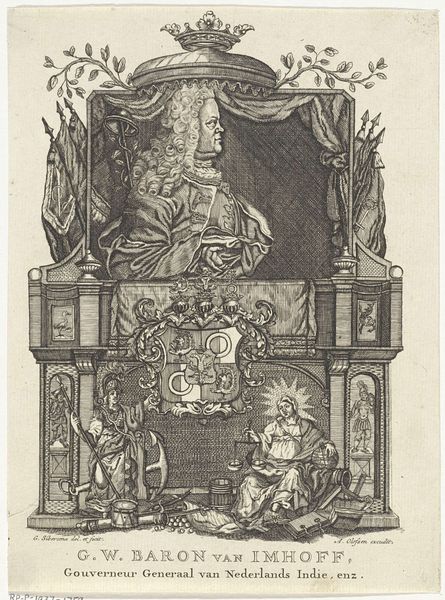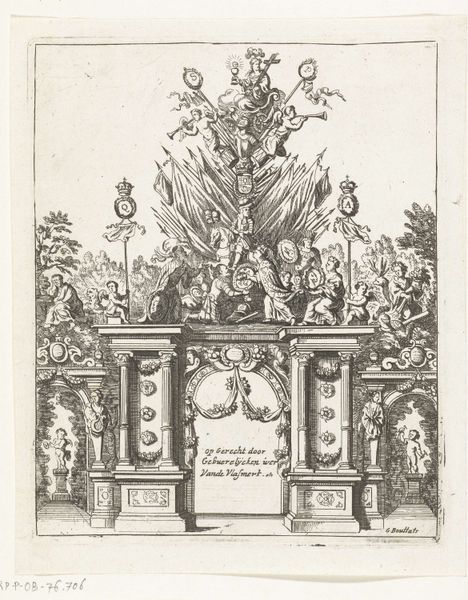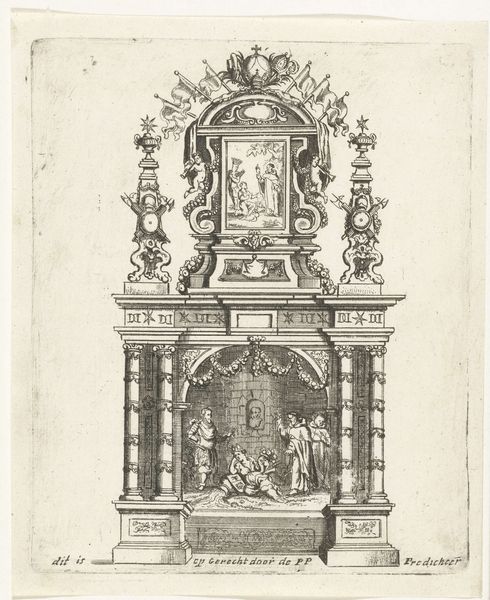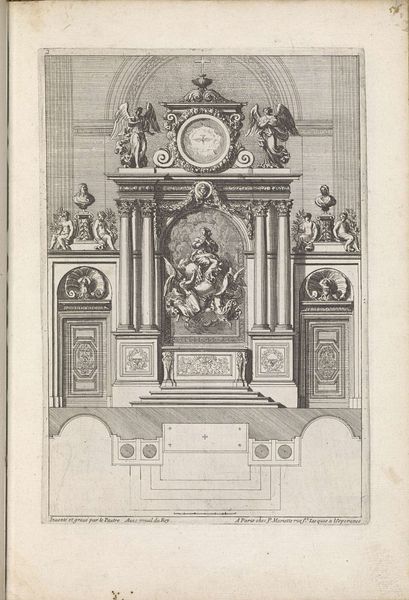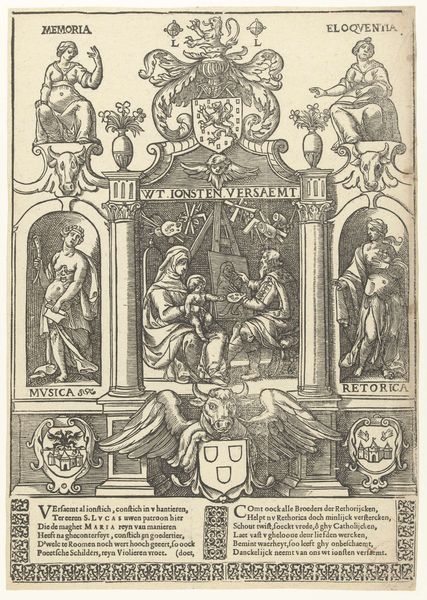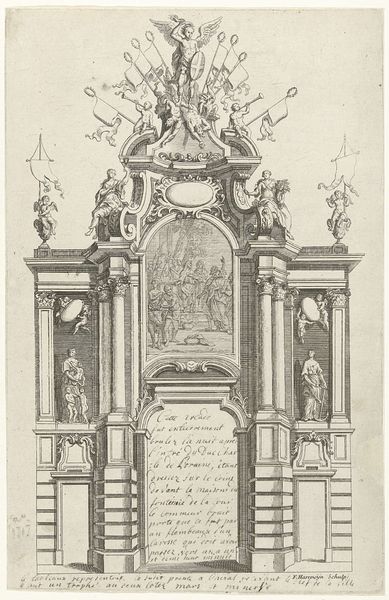
Façade of the Palazzo del Senato in Bologna with the Papal arms at center, with temporary decorations for the entry of Pope Clement VIII in Bologna in 1598 1598
0:00
0:00
drawing, print, engraving, architecture
#
drawing
# print
#
cityscape
#
history-painting
#
italian-renaissance
#
engraving
#
architecture
#
building
Dimensions: Sheet (Trimmed): 8 7/16 × 5 15/16 in. (21.5 × 15.1 cm)
Copyright: Public Domain
Editor: So, this print is by Guido Reni, dating back to 1598. It's called "Façade of the Palazzo del Senato in Bologna…" and depicts temporary decorations made for Pope Clement VIII's visit. It’s incredibly detailed, almost like an architectural blueprint. What stands out to you? Curator: The material transformation at play is key. We see here how fleeting spectacle – the "temporary decorations" – were rendered permanent, or at least semi-permanent, through the reproductive power of the print. The labor involved in creating the actual façade versus its representation through engraving. How many hands were involved and where, exactly, did their contributions meet? Editor: That’s interesting, I hadn’t thought about it in terms of labor and materials. It seems the print elevates something transient into art. Curator: Exactly! Consider the social context: The print makes the spectacle accessible beyond Bologna, thus expanding the reach of papal authority. What does that distribution say about papal control over visual information and communication? Were prints accessible across all strata of society? Editor: So the material of the print itself—the paper, the ink, the very act of printing—becomes a political tool? Curator: Precisely! The architecture shown, although important, only comes into the social arena due to the affordances granted by its mode of dissemination through engraving, which invites examination of labor, accessibility, and intent. And who benefited most from this act of memorialization? Editor: It's fascinating how focusing on the materiality and process unlocks so much more meaning about power dynamics. I wouldn’t have seen that at first glance. Curator: Thinking about art as a material practice reframes our understanding entirely. I learned something about shifting perspective and opening up our visual regimes in ways I had not previously expected.
Comments
No comments
Be the first to comment and join the conversation on the ultimate creative platform.

